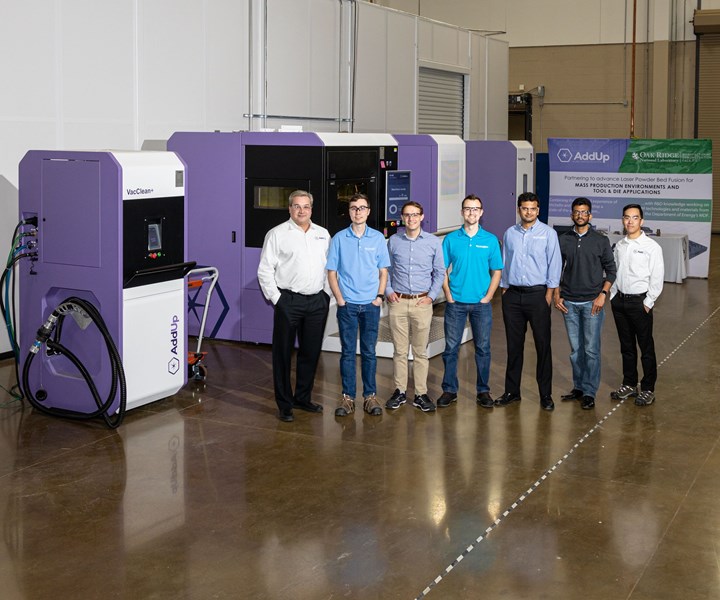Oak Ridge National Laboratory, AddUp Partner on AM for Tooling Applications
Oak Ridge National Laboratory and AddUp have partnered to further additive moldmaking technology for tooling applications.

Members of the Oak Ridge National Laboratories and AddUp team collaborate to target the advancement of materials processes for additive manufacturing tooling applications.
The U.S. Department of Energy’s (DOE) Oak Ridge National Laboratory (ORNL) has partnered with AddUp Group (founded by Fives and Michelin) to further the advancement of additive moldmaking technology for tooling applications.
As part of the $2.7 million cooperative research and development agreement (CRADA), AddUp is developing industrial laser powder bed fusion (LPBF) technology at the DOE’s Manufacturing Demonstration Facility (MDF) at ORNL, with a specific focus on the advancement of metal AM applications for complex tooling.
ORNL contributes an in-depth understanding of material properties and process parameters that leverages in-situ data analytics and advanced machine learning tools. Using the cutting-edge methods of characterization present at the MDF, the CRADA will also expedite the delivery of validated AM process recipes and a deepened comprehension of the microstructural properties of AM tool steels.
The CRADA focuses on the development of breakthrough solutions for the geometric constraints and limitations (such as overhang angles, thin walls and process repeatability) that impede metal AM from becoming a widely adopted method of manufacturing for tooling and mass production environments.
In one instance, AddUp and ORNL are expected to explore the impact of using complex cooling channels to solve challenges in injection molding applications. According to AddUp, subtractive, conventional moldmaking methods that use traditional machinery hinder the design freedom of intricate channels within the mold. This collaborative effort aims to deliver a technology capable of improving pre-existing processes of manufacturing conformally cooled molds with optimized mechanical properties, productivity and quality for enhanced performance in high-volume production environments.
Related Content
-
8 Ways the Plastics Industry Is Using 3D Printing
Plastics processors are finding applications for 3D printing around the plant and across the supply chain. Here are 8 examples.
-
Make Every Shot Count: Mold Simulation Maximizes Functional Parts From Printed Tooling
If a printed tool only has a finite number of shots in it, why waste any of them on process development?
-
Mantle: 3D Printed Molds Address Plastics Industry Lead Time and Skills Shortage
Company now shipping production systems. Steel mold tooling from its TrueShape process can be printed, shaped and sintered in days, and with fewer steps, compared to weeks of lead time for molds made conventionally.














